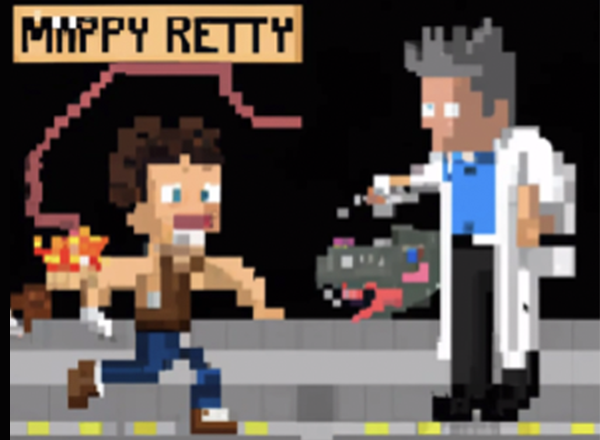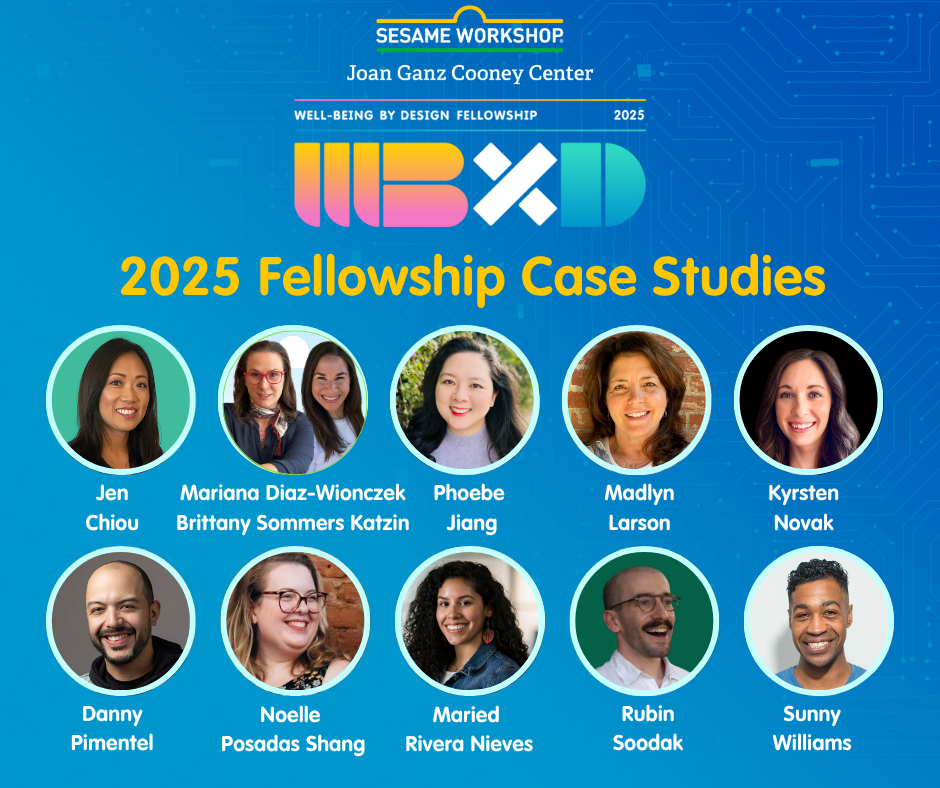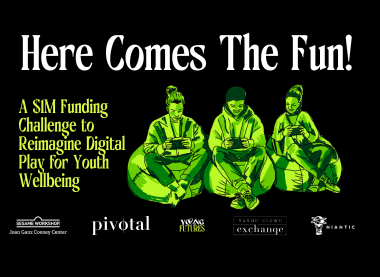
Although we are still in the midst of discovering the implications and opportunities that various technologies bring to our children’s (and our own) lives, we’re seeing a new technological innovation getting a lot of attention: artificial intelligence (or AI) – and specifically Generative AI.
AI is something you’re likely already using in your daily life. If you’ve ever unlocked your phone with facial recognition, spoken to a voice assistant like Siri or Alexa, or relied on a navigation app like Apple or Google maps to choose the fastest route to your destination based on current traffic conditions – you’ve used AI. In principle, AI refers to many technologies (many of which we use on a daily basis) that imitate human-like thinking, learning, and problem-solving1. It’s an incredibly useful tool that makes our lives easier – you might be surprised to learn and test your knowledge of how embedded it is in the world around us.
Much of the buzz that we are hearing right now specifically refers to Generative AI (GenAI) – a type of AI that uses machine learning (explained wonderfully here) to uncover patterns in data from speech, writing, and art and generate new content that looks and sounds like it was made by humans. This means we can now generate full articles and essays, videos of specific characters and scenes, and even music and poetry, all by simply entering a prompt into a GenAI tool2.
It is important to note that GenAI tools are trained on massive amounts of already existing data (text, images, video, etc.) that it searches for patterns from which it learns and then creates novel outputs. GenAI can only use the information available to it when it is trained.
How should kids and families be using GenAI? Maybe your family already uses a voice assistant, like Siri, Google Home, or Alexa to help with your daily tasks, or even tell you a joke. Perhaps your kids have used some of these tools at school to generate ideas for stories or practice their reading, or maybe their teacher has used it to create practice tests or brainstorm questions.
In these and other constantly-evolving ways, GenAI is integrating itself into the daily fabric of our lives – and our children’s – so should we be worried? We wondered what parents of young children (ages 2-8) currently think about GenAI and the changes it brings to their lives.
How do parents feel about AI?
By surveying 53 parents across the U.S. of varying ethnicities (Black n=14, Asian n=2, Hispanic/Latinx n= 8, White n=28, Native American or Alaskan Native n=1) and households incomes (M=$25K-75$K) about their concerns, aspirations, and thoughts on AI coming into their home, we identified three themes that seemed top of mind on this topic:
-
- Most parents expressed a curiosity to learn more about GenAI and its capabilities while expressing a cautious optimism about the benefits AI might bring to their children and families.
“I think that artificial intelligence will make businesses in the whole world a lot better and it won’t burn out people.” (child age 8)
“We don’t really experience AI in our daily lives just yet. I am not sure how my kids would interact with it and if it would be beneficial for them. I do feel that I need to learn more and understand the technology as it is going to be incorporated into our daily lives more.” (children ages 6 & 7).
- Others expressed concerns regarding GenAI’s impact on their children’s privacy, playtime, and creativity, and the impact GenAI may have on their children’s learning abilities, with one parent saying:
“I am concerned about my child using AI in school. Will their school have policies against it? Could they become too reliant on it that they don’t learn? I would love it if AI made certain menial tasks in my life easier. I am cautiously optimistic about AI and still curious to see where it goes in the future” (child age 8)
“We worry about AI in our home [because] it tracks and broadcasts so much about our child. We are very careful to be sure that the baby monitor is not online, but is air-gapped so that no one can see and talk to our child. We are very careful about AI enabled technologies to protect our child from outsiders.” (children ages 2 & 4)
- Alongside these, we couldn’t help but notice a sense of inevitability from parents. One parent mentioned that AI entering the home is:
“….just the nature of the beast in today’s society; AI is taking over. We do monitor usage and act accordingly but we know that we live in a tech world and they will be exposed.” (children ages 2 & 8).
“We don’t experience AI, but I see it becoming a major aspect in the future. I don’t really worry about AI in the home because I know that’s what we are moving to. Everything is technology driven. I’m not very familiar with AI, so I know it will be introduced soon, and I will learn about it as we go.” (children ages 3 & 6).
Experts weigh in on potential opportunities and challenges
These parents’ mixed reactions are representative of how even experts who work with children and GenAI are expressing both potential benefits and downsides of this new technology coming into families’ lives. We surveyed experts, technologists, and scholars about GenAI and its potential opportunities and challenges for children. Their concerns coalesced around three themes:
- Experts expressed concerns about the potential consequences of children using GenAI applications without fully understanding their capabilities, data sources, and limitations. This may be because young children can easily develop parasocial relationships with humanized objects, including the personas of smart speakers, the way they often do with characters they see on screens. But while parasocial relationships can create a slippery slope from reality to fantasy, those connections have been shown to enhance children’s learning3. Describing a study where she explored how children can receive support from GenAI in the learning process, Professor Ying Xu explained:
We integrated AI into children’s television shows so that the kids (ages 4-8) could actually answer questions asked by the main character and receive feedback from the character as they watch TV, trying to simulate how a parent might support their kids when they all watch television together. Interestingly, we found that the kids actually enjoy the learning process more if the questions were coming from the characters rather than an adult, probably in part because the talking with the character creates a more immersive and playful experience.
- A second concern we heard from experts is the challenge of ensuring that a GenAI tool will generate a consistent output for a child. GenAI has been shown to provide incorrect, low-quality, and biased information, which can be problematic for a child who may not be able to distinguish between good information and bad.
- Additionally, some experts expressed concern about a potentially negative effect of GenAI tools on children’s creativity and critical thinking skills, including when used in schools. This is an ongoing debate in the education field, as schools debate whether to integrate AI educational tools in their classrooms.
Alternatively, we’d like to echo the cautious optimism of the parents surveyed above: GenAI may hold many potential opportunities and benefits for children. Take, for example, GenAI’s capability to personalize whatever learning or entertainment content children are consuming. Recent studies have shown interventions that can adjust texts to varying reading levels or incorporate personalized real-world connections that can foster intrinsic reading motivation in children4. One expert provided a vision for personalized storytelling:
“Imagine a world where anything can truly be a ‘choose your own adventure’ with just a little prompting. Kids could share their favorite characters, colors and sports to make a personalized bedtime story, or describe an image they have in their mind to bring their imaginary friends to life.” (Emily Schlemmer, Google, User Experience Researcher)
That’s a whole lot to be (cautiously) optimistic about!
AI is not magic! Some key recommendations
Given this very brief overview of the emerging and evolving insights we have on the impact GenAI may have on children’s lives as these tools become more prevalent, we’ve developed a few tips to keep in mind as we continue to follow GenAI’s journey. In essence, we encourage parents of children of all ages to keep in mind that this technology, like others before it, is what we make of it, and is not, as Bill Shribman, a senior producer at GBH emphasizes, magic:
“We try to remind kids that AI is a tool and that it is a copilot. It’s made by people…that’s why we need to rethink our kids’ media literacy.” (Bill wrote a great medium post about this subject.)
With that in mind, we encourage parents of young children to keep on reading and learning about GenAI and AI applications and their capabilities. Here are a few key recommendations:
- If it’s not helpful, you don’t have to use AI. Before adding AI applications to your home, such as voice assistants like Amazon Alexa or Google Home: “what are the potential benefits of this AI tool? Are they strong enough to offset the risks? Is it necessary?” Remember, some AI tools are not crucial to complete a task, and in some cases, the benefits of AI may not be enough to justify its usage.
- If you do decide to use AI:
- Check for child settings on the devices or media platforms you bring into your home. These settings can be hidden and therefore tricky to uncover at first glance, on both the device and application level.
- Use precise language when referring to AI, e.g., when talking about Alexa, remember “she” didn’t do anything – “it” did!
- When you or your child choose to disclose personal information to an AI tool, think of what could happen should that information be shared outside your home (and who is holding that information in the interim)
- Remember that it’s up to you and your family to decide what’s uniquely yours – for example, your language and culture – that AI may not have the nuance to represent.
- Remember that a positive use of AI is to support thinking. For example, AI can help reveal the process behind difficult math problems, or support a creative activity like storytelling – and not necessarily be a magic wand doing all the work for you!
Although we will undoubtedly see more and more GenAI applications in our daily lives, we retain the power to decide when we bring it into our homes, the conditions under which we feel comfortable doing so, and what precautions we should take to balance the demands of the companies that make AI applications.
1 CRAFT Stanford curriculum
2 For reference: this blog was written entirely by a human 🙂
3 Xu, Y. (2023). Talking with machines: Can conversational technologies serve as children’s social partners?. Child Development Perspectives, 17(1), 53-58.
4 van der Sande, L., van Steensel, R., Fikrat-Wevers, S., & Arends, L. (2023). Effectiveness of interventions that foster reading motivation: A meta-analysis. Educational Psychology Review, 35(1), 21.

Rotem Landesman is a PhD student in the Information School at the University of Washington, co-advised by Dr. Katie Davis and Dr. Amy J Ko. Her research looks at developing metrics for well-being design in digital spaces, alongside fostering youth’s technological wisdom. She is currently a graduate intern at the Joan Ganz Cooney Center.



